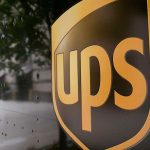
Delivering Operational Efficiency
About this white paper
This white paper has been created off the back of Post&Parcel Live: Delivering Operational Efficiency. We canvassed expert opinion on how to deliver greater operational efficiencies in logistics and published their thoughts in this white paper.
The Post&Parcel Live Seminars are intimate, one-day content and discussion led events for professionals involved in the post and parcel industry. The seminars feature keynote speeches from prominent experts, case studies from successful operators and open discussions with the audience and speakers. Find out more at www.postandparcel.live
Download The white paper
We canvassed opinion from experts for Post&Parcel Live: Delivering Customer Satisfaction for insights on the direction of customer experience in the logistics industry. Download the white paper for free and get insights from Arrow XL, Doddle, Ocado, NeoPost and more…
Introduction to the white paper
Delivering first time, on time, every time, and on budget. This is the target for every delivery company, and the best of them are coming tantalizingly close to the bullseye.
This White Paper takes a broad perspective on what “operational efficiency” means and our contributing experts offer a wide range of strategies and suggestions on how to achieve it.
But there is one common thread running through their advice, guiding you along the logistical labyrinth: efficiency is the product of expertise and technology. The companies which get their delivery proposition right are those which draw upon experience and best practice to build a robust model – but then also have the courage to embrace change and constantly re-engineer their services.
Automation and robotics are, of course, the technologies that most people associate with the drive for operational efficiency. Robotics are already established in many manufacturing plants and distribution centres over the world and their presence is continuing to grow rapidly.
But we are not just seeing more robots; we are seeing smarter, more versatile robots that can perform a multiplicity of tasks with ever-increasing speed.
Sometimes, the robots are designing to work alongside humans as “cobots”. More controversially, there will also be instances where the robots will oust the human worker.
Integrating robots with people in a sortation centre does present operational and managerial issues – but at least this is a relatively controlled environment.
Using robots, drones and autonomous vehicles for final mile deliveries is a much greater challenge. Yes, an autonomous flying drone can deliver parcels on a test site, but how will it cope on a crowded city street where busy, distracted commuters are jostling for space and cars are speeding their way across the lanes?
While it may be some time before autonomous vehicles – and drones and delivery robots – become a standard feature of our city streets, electric vans and delivery bikes/trikes are already making an impact. Delivery companies like DHL, UPS and DPD are developing delivery models where large trucks bring cargo into urban micro-depots; and then nifty, zero-emission e-bikes fan out to make the final deliveries to homes, businesses, parcel stores and lockers. And although robots and drones may be a future feature of the delivery landscape, in the short term we are actually seeing an increase in the human factor with “crowd sourced” or “lifestyle” couriers.
While the high-tech hardware tends to grab the headlines, there is a less visible – but arguably even more significant – revolution taking place in the software sphere.
With route optimization software, carriers can plan a delivery schedule which joins the dot between drop-offs in the most fuel-efficient manner, and also takes into account recipients’ preferred time slots and real-time traffic conditions.
Communication technology is also making it much easier for carriers and retailers to exchange information with the parcel recipient, so they can make sure that the parcel is going to the right address and someone will be available to take delivery.
This could be the real key to achieving operational efficiency: put the customer in the driving seat. If the customer can choose where, when and how they receive their packages, the likelihood of a failed or late delivery – and all the costs that come with it – is significantly reduced.

About Post&Parcel Live
The Post&Parcel Live Seminars are intimate, one-day content and discussion led events for professionals involved in the post and parcel industry. The seminars feature keynote presentations from prominent experts, case studies from successful operators and open discussions with the audience and speakers.









